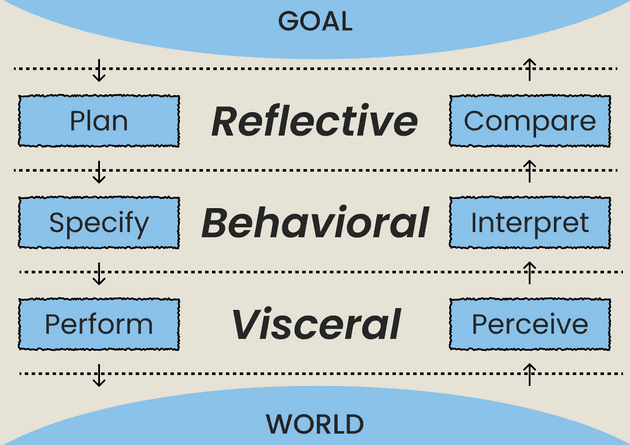Human emotions and behavior can be understood by examining three processing levels: visceral (instinctive reaction), behavioral (learned responses), and reflective (conscious thinking and memory).
In Emotional Design, cognitive scientist and usability engineer Donald Norman proposed three distinct layers of how your brain processes emotions and decisions: visceral, behavioral, and reflective.
The visceral level is your brain's instant reaction. For example, when hearing fingernails scratching a chalkboard, your immediate cringe is visceral. It's automatic and subconscious, designed to protect you by quickly classifying things as good or bad, safe or unsafe.
Designers oftentimes take care of users' visceral level of processing by crafting appealing aesthetics or pleasant sensations, so that they can draw you toward their products without requiring any conscious thought.
The next level is the behavioral level, where your actions are guided by learned skills and expectations. For instance, pressing an elevator button and expecting it to light up.
When reality matches your expectations, you feel satisfied. This level shapes your everyday interactions, from driving your car to navigating a smartphone interface.
Finally, the reflective level involves conscious thought and deep understanding. This is where you reflect on past experiences, assigning meaning, blame, or pride to them.
Suppose you initially struggled with a beautiful, sleek smartphone, but once you mastered it, you reflect positively, even proudly recommending it to friends. Memory and emotions at this level last the longest and have a strong influence on your decisions, often overriding momentary frustrations from the behavioral level.
Thinking of design in three levels helps us understand why, sometimes, beauty overshadows flaws in a product. An attractive visceral appeal, combined with positive reflective memories, can still leave users happily loyal even when the usability is suboptimal.
You can also combine this with the Seven Stages of the Action Cycle. "Plan and Compare" is at the reflective level, "Specify and Interpret" is at the behavioral level, and "Perform and Perceive" is at the visceral level.
